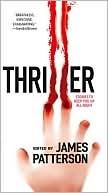 A confession: I’m not a big short story reader. I’ve gone through phases where I was on a Chandler or Munro kick, but by and large I tend to read novels. Recently I’ve been judging a short story contest, however, and it’s been an interesting experience. What I’ve discovered is that when it comes to crime fiction, the short story format is apparently a trickier beast to wrestle down.
A confession: I’m not a big short story reader. I’ve gone through phases where I was on a Chandler or Munro kick, but by and large I tend to read novels. Recently I’ve been judging a short story contest, however, and it’s been an interesting experience. What I’ve discovered is that when it comes to crime fiction, the short story format is apparently a trickier beast to wrestle down.
The stories that fail appear to fall into a few categories (food-related; humor me):
- The Grande Burrito: The author crammed it all in, and what could have been expanded into a full manuscript has been abridged. These stories tend to open with some lovely lyrical passages before morphing into a rapid-fire ending that usually involves an information dump on the final page. In these cases, I get the sense that the writer bit off more than they could chew. Rather than focusing on a smaller, self-contained story, their scope was too broad and it ended up being a hot mess.
- The Chinese Food Syndrome. The opposite problem: these stories left me wanting more. Not enough happened, or the scope was too small. The best short stories are self-contained, hewn down to the bare essentials, and when you turn the last page you find yourself fully satisfied. You’ve been told just what you need to know, and everything was resolved in a way that was satisfying. The perfect dessert, if you will.
- The Pancake: Everything is flat. Two-dimensional characters whose motivation is never clear, a plot that doesn’t make sense, nothing seems to gel. You don’t need much to describe a character; the best writers can do it in a sentence. So for me to go through an entire story and come away with no sen
 se of the characters is inexcusable. One of my all-time favorite stories is “Cathedral” by Raymond Carver:
se of the characters is inexcusable. One of my all-time favorite stories is “Cathedral” by Raymond Carver: - This blind man, feature this, he was wearing a full beard! A beard on a blind man! Too much, I say.
That one passage not only describes the blind man, it also speaks volumes about the main character, telling you everything you need to know to make the final passage of the story transcendent.
- The Filler: Like a hamburger without the bun. These stories invariably involve characters from a recurring series. Ideally, these stores should offer another perspective on them and their actions, whetting your appetite enough to draw you into following them for a full book (or ten). But far too often
 these are an ad masquerading as a story. I love vignettes told from the point of view of a different character in the book (Rosencrantz and Guildenstern are Dead is a favorite of mine). Our own Clare did this recently, as did J.A. Konrath and Lee Child in the Thriller Anthology. For me, those stories work. Less appealing is something that’s clearly excerpted from a book.
these are an ad masquerading as a story. I love vignettes told from the point of view of a different character in the book (Rosencrantz and Guildenstern are Dead is a favorite of mine). Our own Clare did this recently, as did J.A. Konrath and Lee Child in the Thriller Anthology. For me, those stories work. Less appealing is something that’s clearly excerpted from a book.
Mind you, many of the stories I loved, and all for different reasons. Most offered a glimpse of characters at a crossroad. The story depicts a flash from their lives when the crime they encounter, whether expected or unexpected, defines them in just a few short pages. A standoff in a drugstore, or a murder in an alley. Not that it has to take place in a short time frame, but by and large I don’t need to see their entire lives, and I really don’t enjoy a Christie-style parlor room “this is what happened” scene at the end. Just give it to me straight.
So what do you think makes a strong short story? And is it a tougher format for crime fiction?
